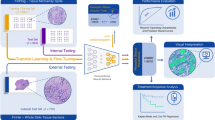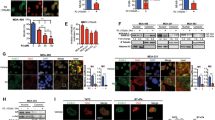Abstract
In the normal breast, ERBB4 regulates epithelial differentiation and functions as a nuclear chaperone for signal transducer and activator of transcription (STAT) 5A, thereby stimulating milk-gene expression. In addition, ERBB4 functions as a proapoptotic protein, suppressing the growth of malignant cells. We hypothesize that these ERBB4 activities can be marshaled to suppress the growth of breast tumors. To this end, we have created an ERBB4 allele harboring an activating transmembrane mutation (ERBB4-CA) by substituting isoleucine 658 for glutamic acid. This base substitution forms a valine-glutamic acid-glycine activation domain first identified in oncogenic ERBB2/HER2/Neu. Ectopic expression of ERBB4-CA in HEK293T cells resulted in a fivefold increase in receptor tyrosine phosphorylation. Functionally, ERBB4-CA exhibited higher levels of nuclear translocation than wild-type ERBB4, leading to significantly enhanced ERBB4-induced STAT5A simulation of the β-casein promoter. Activated ERBB4 has been demonstrated to induce cell killing of breast tumor cells. Significantly, ERBB4-CA potentiated the proapoptotic function of ERBB4 in each breast, prostate and ovarian cancer cell line tested. Untransformed cell lines were resistant to both ERBB4 and ERBB4-CA-mediated apoptosis underscoring the potential utility of active ERBB4 signaling for the therapeutic intervention of human cancer.
This is a preview of subscription content, access via your institution
Access options
Subscribe to this journal
Receive 50 print issues and online access
$259.00 per year
only $5.18 per issue
Buy this article
- Purchase on SpringerLink
- Instant access to full article PDF
Prices may be subject to local taxes which are calculated during checkout




Similar content being viewed by others
Accession codes
References
Bargmann CI, Hung MC, Weinberg RA . (1986). Nature 310: 226–230.
Bargmann CI, Weinberg RA . (1988). Proc Natl Acad Sci USA 85: 5394–5398.
Barnes NL, Khavari S, Boland GP, Cramer A, Knox WF, Bundred NJ . (2005). Clin Cancer Res 11: 2163–2168.
Burke CL, Lemmon MA, Coren BA, Engelman DM, Stern DF . (1997). Oncogene 14: 687–696.
Clark DE, Williams CC, Duplessis TT, Moring KL, Notwick AR, Lane WS et al. (2005). J Biol Chem 280: 24175–24180.
Jones FE, Golding JP, Gassmann M . (2003). Cell Cycle 2: 555–559.
Jones FE, Welte T, Fu X-Y, Stern DF . (1999). J Cell Biol 147: 77–87.
Kew TY, Bell JA, Pinder SE, Denley H, Srinivasan R, Gullick WJ et al. (2000). Br J Cancer 82: 1163–1170.
Long W, Wagner K-U, Lloyd KCK, Binart N, Shillingford JM, Hennighausen L et al. (2003). Development 130: 5257–5268.
Miloso M, Mazzotti M, Vass WC, Beguinot L . (1995). J Biol Chem 270: 19557–19562.
Naresh A, Long W, Vidal GA, Wimley WC, Marrero L, Sartor CI et al. (2006). Cancer Res 66: 6412–6420.
Ni C-Y, Murphy MP, Golde TE, Carpenter G . (2001). Science 294: 2179–2181.
Segatto O, King CR, Pierce JH, Di Fiore PP, Aaronson SA . (1988). Mol Cell Biol 8: 5570–5574.
Srinivasan R, Poulsom R, Hurst HC, Gullick WJ . (1998). J Pathol 185: 236–245.
Stern DF, Kamps MP, Cao H . (1988). Mol Cell Biol 8: 3969–3973.
Tidcombe H, Jackson-Fisher A, Mathers K, Stern DF, Gassmann M, Golding JP . (2003). Proc Natl Acad Sci USA 100: 8281–8286.
Vidal GA, Naresh A, Marrero L, Jones FE . (2005). J Biol Chem 280: 19777–19783.
Weiner DB, Liu J, Cohen JA, Williams WV, Greene MI . (1989). Nature 339: 230–231.
Williams CC, Allison JG, Vidal GA, Burow ME, Beckman BS, Marrero L et al. (2004). J Cell Biol 167: 469–478.
Witton CJ, Reeves JR, Going JJ, Cooke TG, Bartlett JM . (2003). J Pathol 200: 290–297.
Yarden Y, Sliwkowski MX . (2001). Nat Rev Mol Cell Biol 2: 127–137.
Acknowledgements
We thank Amy Notwick for editing this manuscript and members of the Jones laboratory for helpful suggestions and critical insight. This work was supported by National Cancer Institute/National Institutes of Health grants RO1CA95783 and RO1CA96717 (FEJ), US Army Medical Research and Material Command grant DAMD17-03-1-0395 (GAV) and funds generously supplied through the National Cancer Coalition and the Tulane Cancer Center.
Author information
Authors and Affiliations
Corresponding author
Rights and permissions
About this article
Cite this article
Vidal, G., Clark, D., Marrero, L. et al. A constitutively active ERBB4/HER4 allele with enhanced transcriptional coactivation and cell-killing activities. Oncogene 26, 462–466 (2007). https://doi.org/10.1038/sj.onc.1209794
Received:
Revised:
Accepted:
Published:
Issue date:
DOI: https://doi.org/10.1038/sj.onc.1209794
Keywords
This article is cited by
-
The role of ErbB4 in cancer
Cellular Oncology (2020)
-
Association of ErbB1–4 expression in invasive breast cancer with clinicopathological characteristics and prognosis
Breast Cancer (2014)
-
Reactivation of epigenetically silenced HER4/ERBB4 results in apoptosis of breast tumor cells
Oncogene (2010)
-
WW domain containing E3 ubiquitin protein ligase 1 targets the full-length ErbB4 for ubiquitin-mediated degradation in breast cancer
Oncogene (2009)
-
Proteolytic cleavages give receptor tyrosine kinases the gift of ubiquity
Oncogene (2009)



